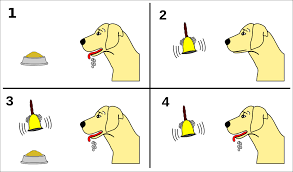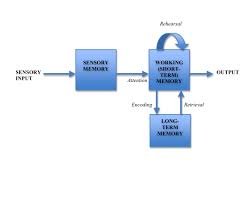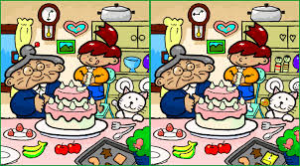Classical conditioning by Ivan Pavlov
Most educators in the world have been introduced to classical conditioning by Ivan Pavlov during our training in the teacher institution.

You can watch the videoclip below to find out more about the experiments conducted.
Pavlov did many experiments on a dog using food as a natural stimulus and he used a variety of neutral stimulus like ringing of bell, light etc.
During the experiments, the dog reacted even without eating the food simply when the neutral stimulus was used.
This behaviourism theory has major influence in the theory of learning.
It is a stimulus-response type of learning.
The dog was conditioned to response to a certain situation as a result of conditioning the association of food with a neutral stimulus.
Implications to education
Motivation to learn a subject
As a student, had you ever hated a subject because they did not like the teacher?
I am sure many of us did. This lack of motivation for the subject had been naturally associated to the teacher who was teaching it.

The way the teacher had treated the class and the methods that the teacher used to teach it may have been extremely strict as well as boring.
This may have led to lack of motivation and we hated the subject because of these simple reasons.
On the opposite, had you ever liked a subject even though the topic was really a boring subject?
A teacher who always jokes and used different fun ways to teach the boring subject.
You looked forward to his lessons because you had associated fun with the subject due to his lively lessons.
As a classroom teacher of this modern age, we were exposed to many learning theories.
We can make a difference to the attitude of learners.
Key principles of classical conditioning
Acquisition
A neutral stimulus is used together with an unconditioned stimulus that is natural and automatically stimulates a reaction without intentional learning.

After the pairing is made, a behaviour will respond to the neutral stimulus which we can consider that the response has been acquired.
Acquisition is a great way in our area of discipline. Some teachers like to ring a bell to get students’ attention.
Whenever the bell is sounded, the whole class becomes quiet.
Extinction
In simple, the neutral stimulus that is previously paired has been unpaired with the unconditioned stimulus resulting decrease or disappear of classical conditioning.

This is especially useful if you are looking for ways to remove a bad habit in children.
Spontaneous Recovery
After extinction, the conditioned response suddenly appeared again even after a period of time.
This is what is known as spontaneous recovery.

Nevertheless, the extinction will disappear very quickly as long as we do not pair the conditioned and unconditioned stimulus again.
A bad behaviour may suddenly appear but we can address it and help it to be removed by being conscious of the cause.
Stimulus Generalization
A reaction to a similar conditioned stimulus after the response has been conditioned.

In John B. Watson’s famous Little Albert Experiment, the child was conditioned to be afraid of white rat.
You can watch this video about the Little Albert Experiment below.
When the child was presented with furry white soft toys, white objects etc, the same fear appeared.
The child had demonstrated how he had generalised the conditioned stimulus with other similar things.
Stimulus Discrimination
In simple, this is when the subject is able to differentiate the conditioned stimulus out of other unconditioned stimulus.

A teacher uses a bell in class.
When the school bell rings, the students will not be suddenly quiet and give the teacher their attention as they can recognise the sound of the teacher’s bell.
In conclusion
This short article gives an overview of the learning theory of classical conditioning.
It intends to raise your awareness of how to cope with the different classroom behaviours and learning needs with this awareness.
Further research will enable you to make full use of this theory. There are also other learning theories that can make positive impact to learners.
Classical conditioning is just one of the many learning theories around.
Reference:
Woollard, J. (2010).Psychology for the classroom: Behaviourism. Routledge
Bouton, M. E., & Swartzentruber, D. (1991). Sources of relapse after extinction in Pavlovian and instrumental learning. Clinical Psychology Review, 11(2), 123-140.


Disclaimer: This is my personal reflection and I am not in any position to instruct anyone what they should do. I am not responsible for any action taken as a result of this post. My post can only be a reference for your further research and growth. By reading this post, you acknowledge and accept that. All images and pictures were taken from google images that are free from copyright under labelled for reuse.
Posted from my blog with SteemPress : http://fun2learn.vornix.blog/2018/08/07/classical-conditioning-by-ivan-pavlov/
Thanks for sharing! When I took the psychology module in my uni days, classical conditioning was one of the topics that really left a deep impression in me. At that time, I started to think of the small things in life that we had unknowingly conditioned to. For example, red is associated to danger while on the road and a slight sense of pain and fear is felt when you see a needle at the clinic.
The other concept which I still remember is Skinner's Operant Conditioning. It is probably one of the most used learning/teaching techniques in our daily life. Haha..
You really have great memory since these concepts may not be used for your current job. Thanks for sharing your experience and appreciate the time you spent to drop a comment on my article.
Haha.. these concepts are embedded in our daily life. Besides, I am also very interested in behavioral economics. So these concepts will naturally catch my attention
Posted using Partiko Android
Your post has been selected as the @steemiteducation Post of the Day:)
Join us in our Discord channel here to drop your post in our post promotion page, and make sure to use the #steemiteducation tag in the post itself.
Thank you very much @steemiteducation! Really appreciate the recognition for the effort that I have put in for the article.
Hello fun2learn!
Congratulations! This post has been randomly Resteemed! For a chance to get more of your content resteemed join the Steem Engine Team